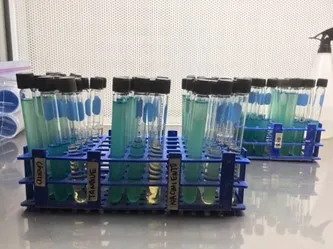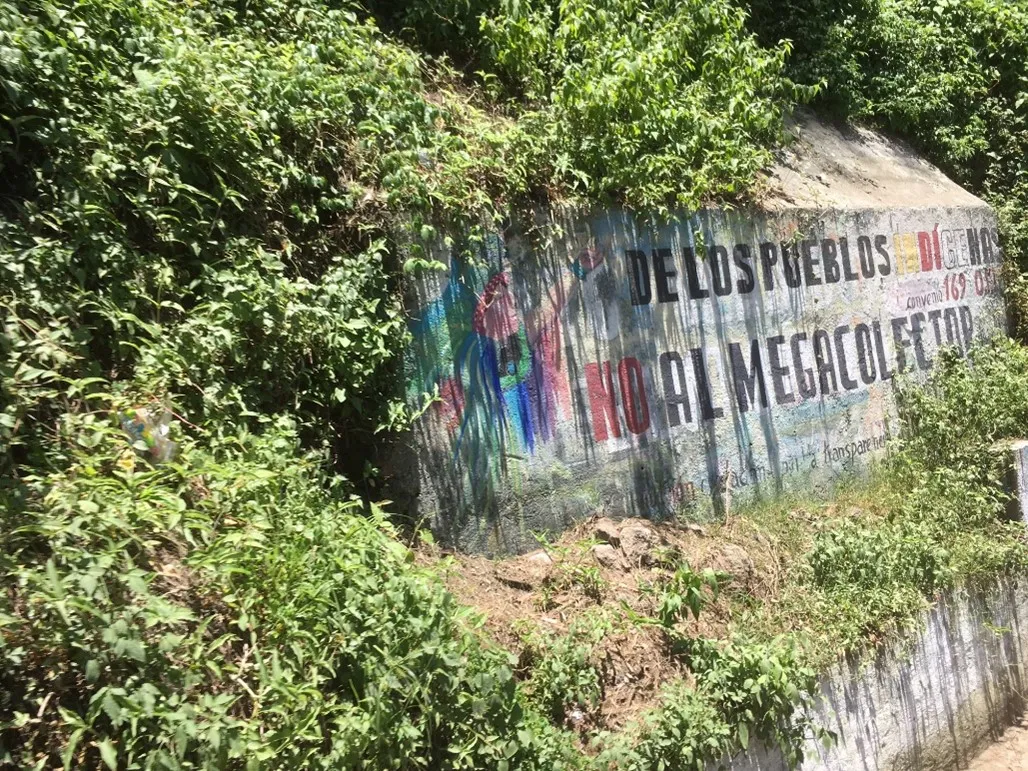Navigating Water Quality: Illuminations from Sololá, Guatemala

Water quality and access are critical cultural, political, and social issues due to their significance for the health and survival of people and ecosystems. Indigenous and poor communities disproportionately bear the health and socioeconomic impacts of environmental degradation due to human development projects and population growth (Roegner et al., 2017). The Mayan Indigenous populations in Guatemala have historically been violently oppressed and marginalized, including by those wielding modern Western science in the name of “development.” More than 90% of the population of Sololá department is home to Indigenous Mayan communities, mainly K’iche, Kaqchikel, and Tz'utujil, for whom water quality is an ongoing struggle. Pollution from agricultural and wastewater runoff from the towns in the watershed threatens water quality for the region. Known health effects from water consumption and interaction include abdominal pain, skin problems, and childhood diarrheal disease, and longer-term effects are still unknown (Bentley et al., 2004; Laubach et al., 2004). The region’s Lake Atitlán, one of Guatemala’s largest lakes and a significant tourist attraction, is also at risk as it increasingly shows signs of contamination such as cyanobacteria blooms.
While doing my fieldwork in Sololá in the summer of 2023, I was invited to observe a traditional water ceremony, an event that many Indigenous Mayan communities in Sololá, hold yearly to thank the Earth for providing water and ensure continued water sources. Community members wore colorful traditional Mayan outfits, huipiles, whose design and style indicate community of origin. Music from the marimba, added a melodic, rhythmic tone to the event. In a clearing, an elaborate set-up of candles, incense, flower petals, chocolate, money, and sugar, were prepared as an offering. Later, a live chicken was killed and put on top of the other offerings, and the entire collection of gifts was engulfed in fire. In Kaqchikel, three men recited Mayan calendar dates, as is the procedure for Mayan ceremonies.
From attending this ceremony, I could see that water is more than a chemical and physical entity to these communities; it is also sacred and a being. This value of water and relationship with la madre tierra stands in stark contrast to the other ways in which I saw water while working with an environmental research center, Centro de Estudios de Atitlán (CEA). The CEA team is composed of people highly educated by Western institutions who, to study community water, undertook elaborate days-long procedures using expensive equipment, which typically is inaccessible to Indigenous communities. CEA represents a Western modern science perspective, in which numbers are the paramount concern to determine the water’s value and usefulness.

Both the Mayan Indigenous communities and Western modern science institutions are interested in protecting the environment and improving community access to quality water. However, their perspectives of what quality water is and how best to improve quality are different and can cause collaboration to be a challenge.
While doing my fieldwork in Sololá, Guatemala, I was most interested in learning through interviews and observation about Western modern science initiatives that were aimed at improving water quality and access for the Indigenous communities in the region. Two projects stood out to me because of their contention: a wastewater relocation and treatment project called the “Megcolector,” and the chlorination treatment of community water.
When the Megacolector project was introduced in 2013, it was met with resistance because the Mayan Indigenous communities’ sacred, albeit dirty, water would be moved to industrial agricultural fields on the other side of Guatemala and would generate a profit for outside entities through biofuels. Additionally, plans for the Megacolector wastewater treatment project were announced before it was discussed with local Indigenous communities. Due to a lack of appropriate planning and collaboration with the Indigenous communities around the lake, the project ultimately dissolved, in favor of each municipality deciding its own wastewater management strategies. A mural I found while exploring the area (see photo below) depicts the resistance that communities had towards this poorly coordinated project. The mural says: “De Los Pueblos Indigenas, NO al Megacolector,” Indigenous Communities Say NO to the Megacolector.

Water chlorination was another contentious water quality solution. Despite it being an intervention that is widely known as being an inexpensive, quick method of killing many biological contaminants, I saw that most Indigenous communities in the region were strongly opposed to it. The over-dosage of chlorine from lack of appropriate technology and skilled technicians resulted in water that communities were more likely to consider contaminated than purified. Its strong chemical flavor made it unpalatable for drinking. As I visited Indigenous communities with CEA, and water analysis showed the presence of fecal-related contaminants such as E. coli in their drinking water, the CEA team had to think creatively to devise an acceptable treatment method. Despite the possibility of coming up with a chlorination project that would correctly dose the water, chlorination now has such a bad reputation, that it is safer for Western modern science institutions to not push chlorination as a possible solution lest they risk communities’ refusal to collaborate altogether.
Despite the overwhelmingly negative response to chlorination and the Megacolector project, I was also able to observe water quality projects that were better received by Indigenous Mayan communities. These included the various education activities that CEA leads, including a television program on environmental science topics, school science fairs, and a community water analysis and education program. Community members also were receptive to using water purification filters in their homes, but many households found the filters too expensive. There were also activities aimed at reducing human impact on the environment, including a tul pruning activity, in which I joined community members in caring for the aquatic plants that support a healthy lake ecosystem and natural water filtration.

From my fieldwork and research analysis observing these different Western modern science water quality initiatives, I conclude that these initiatives are necessary, but need to be conscientious of Indigenous perspectives and undertaken in collaboration with communities and with effective communication between all parties. Successful collaboration between Western modern science endeavors and Indigenous communities should allow Indigenous communities to take ownership of projects and incorporate Indigenous water and environmental values. Water initiative planners and scientists need to understand indigenous resistance to water quality initiatives is not a reflection of a lack of education or incorrect priorities, but rather is based on a concrete reality and history that has shaped Indigenous mistrust towards such initiatives. Additionally, Indigenous worldviews need to be taken seriously, including how natural resources like water are sacred and relational beings. Working to build trust and negotiating appropriate intervention strategies requires extensive communication and collaboration.
I am grateful to have received grants from the Center for Regional Food Studies, the Tinker Foundation, and the Graduate and Professional Student Council, without which my thesis fieldwork would not have been possible.
Lastly, thank you to all my interlocutors for the time you took to share your stories and knowledge with me.
References
Bentley, Camille, Harold Laubach, Joel Spalter, Elisa Ginter, and Lauritz Jensen. “Relationship of Cryptosporidiosis to Abdominal Pain and Diarrhea in Mayan Indians.” Revista Do Instituto de Medicina Tropical de São Paulo 46 (August 2004): 235–37. https://doi.org/10.1590/S0036-46652004000400011.
Laubach, H. E., C. Z. Bentley, E. L. Ginter, J. S. Spalter, and L. A. Jensen. “A Study of Risk Factors Associated with the Prevalence of Cryptosporidium in Villages around Lake Atitlan, Guatemala.” Brazilian Journal of Infectious Diseases 8 (August 2004): 319–23. https://doi.org/10.1590/S1413-86702004000400008.
Roegner, Amber, Gerson Ochaeta, Estuardo Bocel, Zachary Ogari, Beth Pfotenhaeur, and Eliska Rejmankova. “Employing CBPR to Investigate Function, Utility, and Longevity of Household Filters to Improve Potable Water Quality for Indigenous Peoples at Lake Atitlán, Guatemala: A Pilot Study with San Pedro de La Laguna.” Energy, Ecology and Environment 2, no. 2 (April 1, 2017): 95–113. https://doi.org/10.1007/s40974-016-0045-4.

